Car camping offers several benefits compared to sleeping in a tent, including increased comfort, convenience, and protection. Unlike a tent, your vehicle provides a strong barrier against animals, severe storms, and other potential hazards. However, it doesn’t eliminate dangers entirely.
Whenever someone tells me they’re planning to camp in their car, I remind them to take precautions against bears – and folks are often quite surprised to learn it’s an issue to address. Fortunately, staying safe from bears when camping in your car is typically an easy and straightforward process.
Here are eight tips to keep in mind when car camping in bear country:
1. Understand a Bear’s Mindset Towards Food
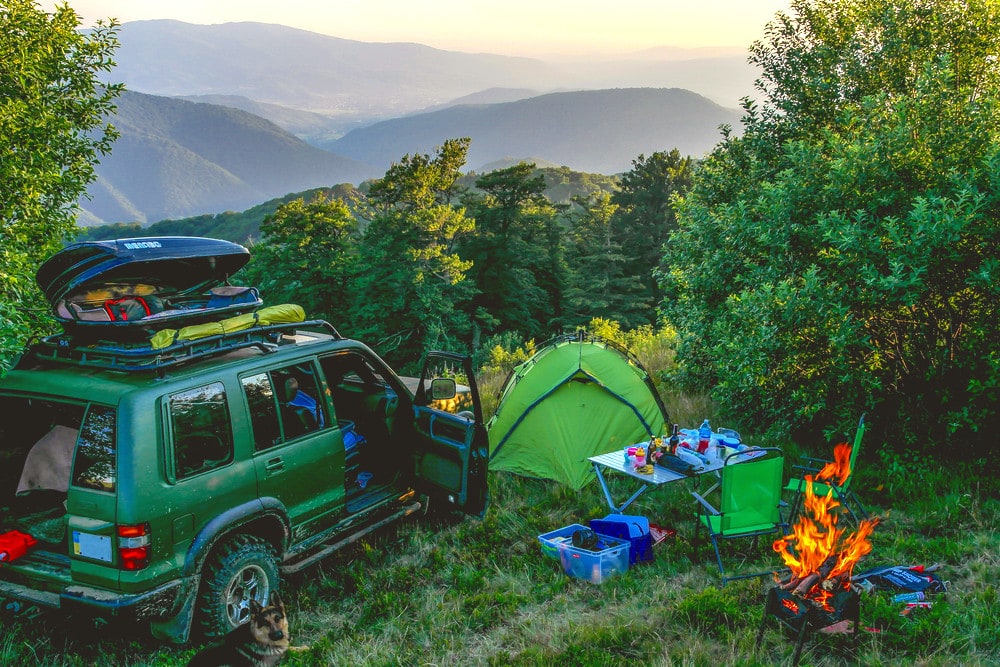
To protect yourself against bears, you must think like a bear – and a lot of those thoughts involve eating. Bears are opportunistic omnivores, which is a fancy way of saying that they’ll eat just about anything they find. In the wild, bears will eat nuts, berries, carrion, live animals, and more.
While bears show interest in practically any type of human food, they’ll also seek out a variety of non-edible products too. When I talk about safely storing your “food,” I don’t mean just the meals and snacks you brought along on your trip. Bears are also attracted to the smells of toothpaste, deodorant, citronella oil, pet food, and basically anything else with a strong scent.
Additionally, bears don’t just smell food. They smell where it’s been. For example, cookware and even the clothes you wear can carry food scents that might attract bears.
2. Learn About Your Camping Location
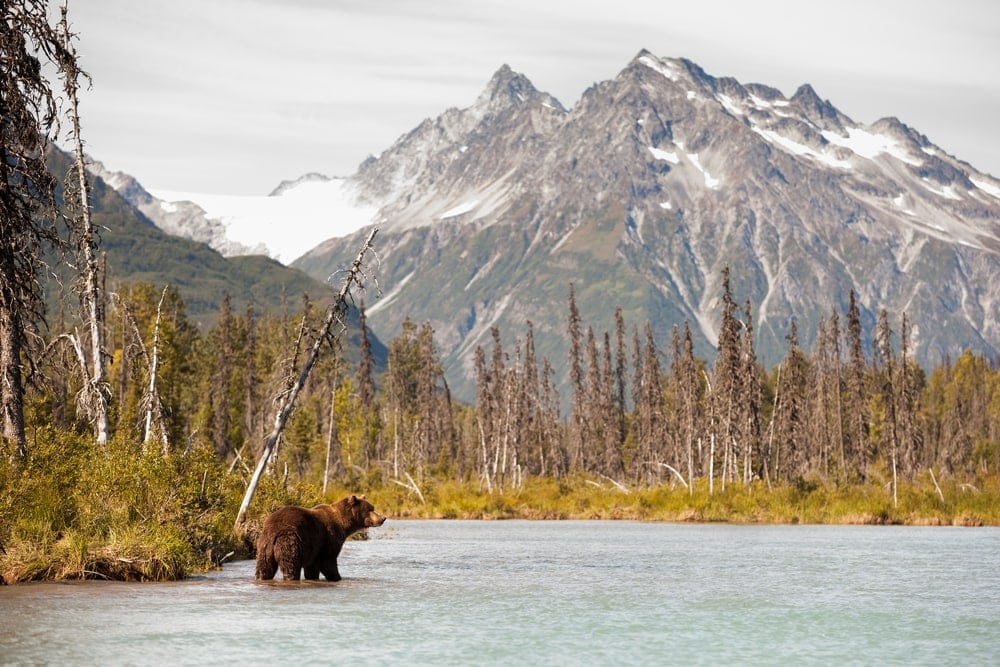
Bears are found in almost every US state. They prefer forests but will also live in swamps, mountains, bogs, and other environments. No matter where you’re camping, always prepare for the possibility of encountering a bear at night or even during the day.
However, your chances of encountering a bear are more likely in some places than others. Specifically, bears in national and state parks are typically accustomed to the presence of humans, so they’re often not shy about entering campsites. Plus, once a bear develops a taste for human food, they’ll continue to seek it out.
The time of year also makes a difference. Bears are typically more active in the summer and spring. During the winter, they’re less active due to hibernation. However, not all bears hibernate, or hibernate at the same time, so it’s important to take appropriate precautions year-round.
3. Choose an Appropriate Camping Spot
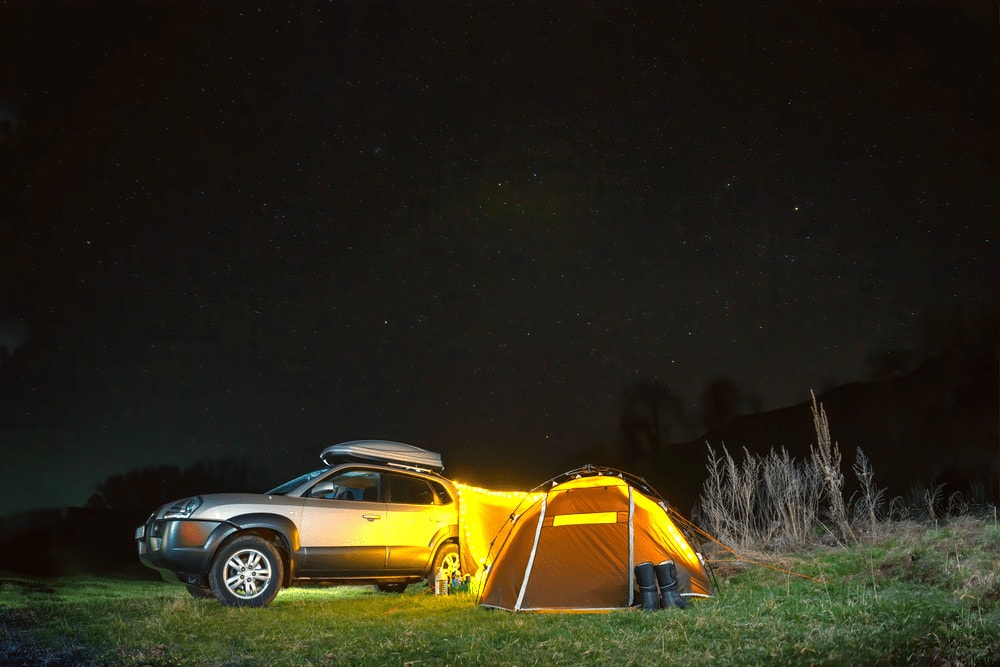
Along with understanding the general area where you plan to camp, also pay close attention to the specific spot where you want to park your car. Avoid locations where bears like to hang out, which includes the banks of streams and lakes, forest edges, dense vegetation, and areas with wild berries.
Additionally, check the spot for signs of recent bear activity, such as claw marks on trees, bear footprints, and bear scat. Bear scat is typically cylindrical with tapered ends. It usually measures about seven inches by one inch in size. Also, it has a sweet smell that attracts ants.
4. Store Your Food in Bear Canisters
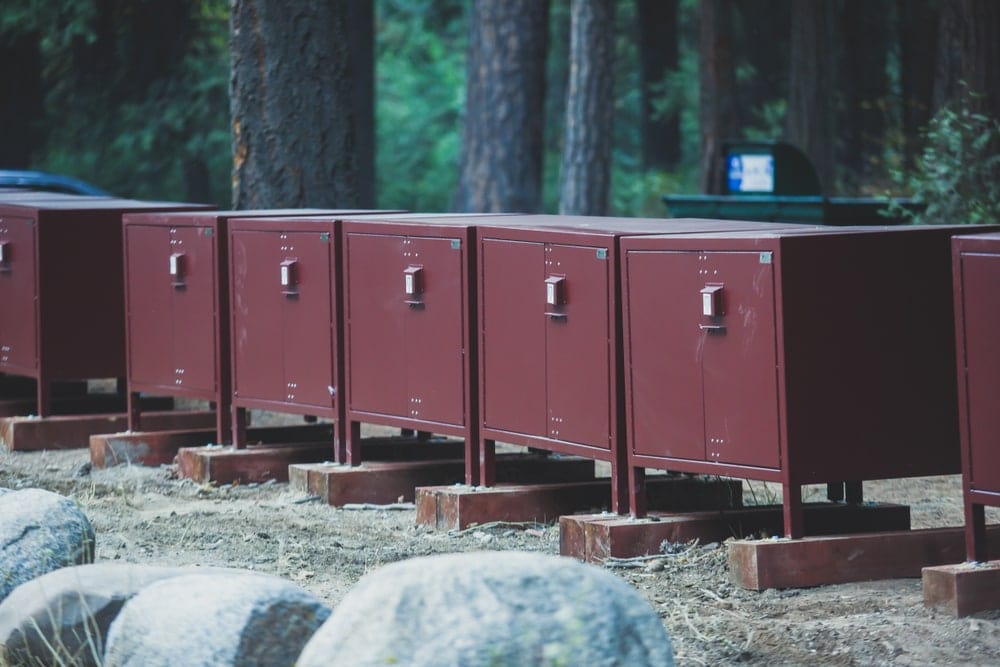
A bear canister is a container specifically designed to keep food safely secured from bears. They’re typically made from durable plastic with a locking lid. You can find them in a variety of sizes, including small bear canisters suitable for backpacking as well as large bear canisters capable of holding several days’ worth of food.
While bears can’t open bear canisters, they might still show an interest, so you want to place them on a flat surface away from any hills or downslopes. If a bear or another animal knocks the canister around, you don’t want it to roll away where you can’t recover it later.
Many national and state parks require bear canisters, so check for any specific rules for where you plan to camp. Ranger stations and visitor centers might rent canisters, but supplies can run low during busy seasons, so it might be easier to just buy your own.
5. Suspend Your Food in the Air
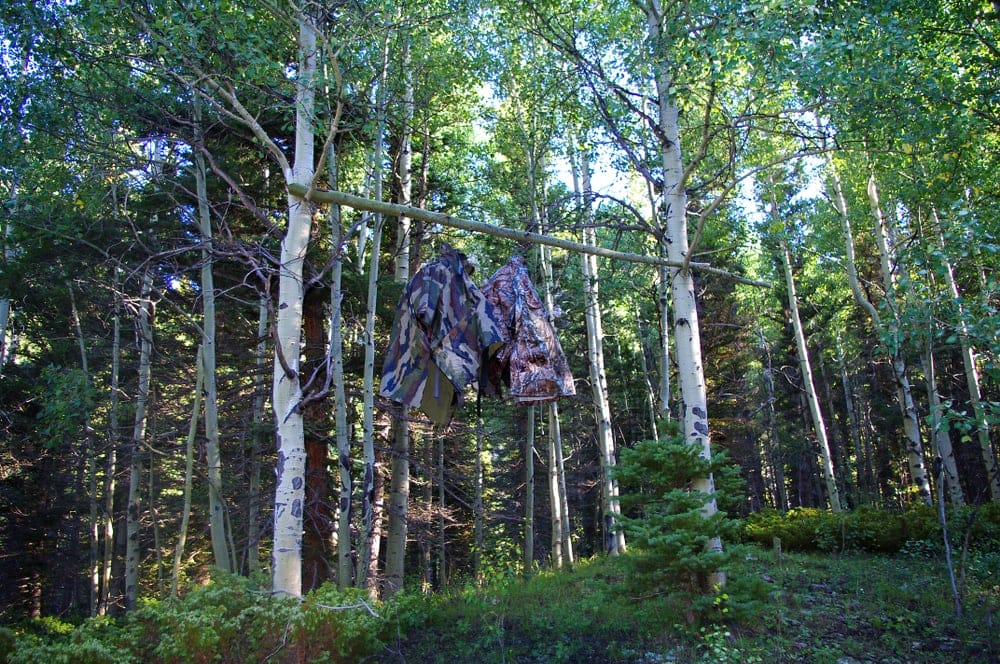
Another way to secure your food from bears is to suspend it in the air where bears can’t reach it. First, pack all enticing items (food, toiletries, etc.) into a bear bag, which is a durable sack designed to suppress odors and resist tearing. Then, you’ll hang the bag in one of several ways:
- Between two trees
- Hanging from a branch with a rope tied to the trunk or secured to the ground
- Counterbalanced over a long limb
No matter where you hang the bag, make sure it’s inaccessible to bears. It should hang 10 feet above the ground, at least four feet down from the top of the tree, and at least four feet out from the tree trunk.
Suspending your food from a tree is a fairly labor-intensive process. I certainly don’t like to take the time to do it unless there’s no other option. Fortunately, many US camping areas provide food poles. They’re metal, H-shaped bars. You use a pole or cable system to hang your bear bag from the top hooks. It’s just as effective as hanging gear from a tree but far easier.
6. Store Your Food in Your Car
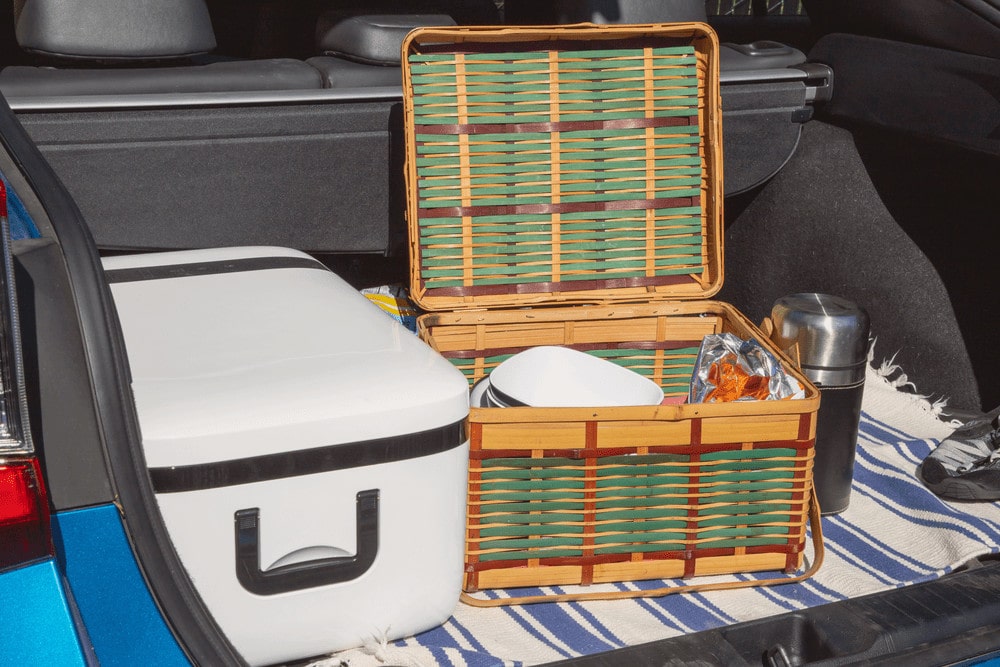
When car camping in bear country, you can store food in your vehicle, but you need to follow certain rules. First, don’t store food in your car if you’re camping in a busy area where bears have grown accustomed to humans, such as national parks. Instead, use either a bear container or suspension system.
However, you can store food in your car if you’re camping in a relatively secluded spot. Follow these guidelines to help minimize enticing food smells:
- Store your food in a sealed container. A bear-proof container is great, but even a heavy-duty storage container will work, as the car itself acts as a secondary scent barrier.
- Keep the windows closed when you’re not in the vehicle. If you’re sleeping or otherwise hanging out in your car, you can keep the windows rolled down slightly for ventilation.
I’ve stored food in my vehicle quite a few times and never had an issue. Just make sure you follow the rules above and understand the frequency of bear activity in the area where you’re parked.
7. Bear-Proof Your Car
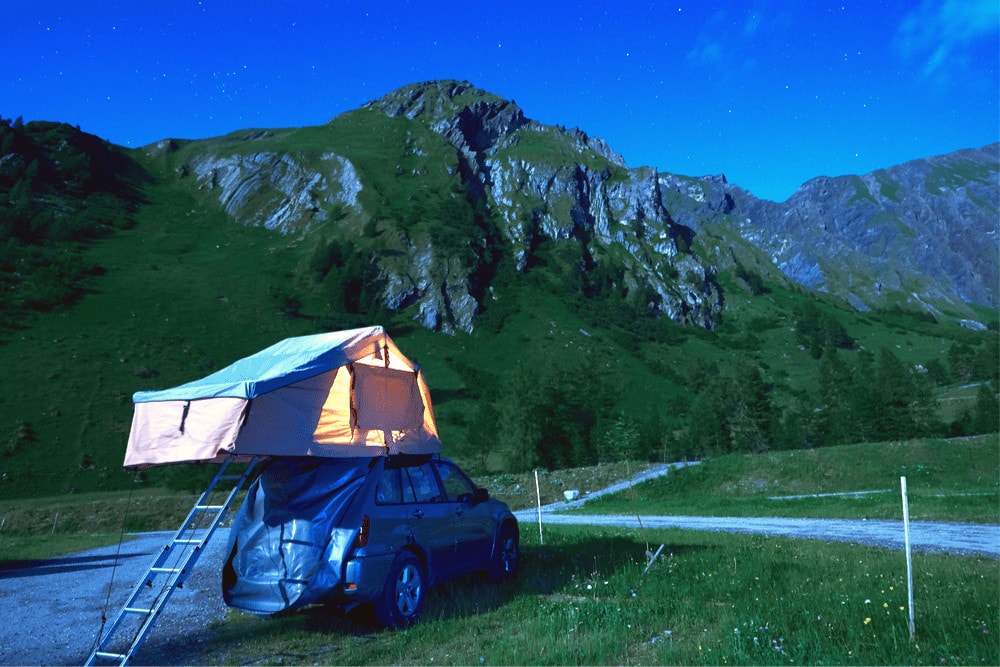
Keep bears out of your car by implementing a few simple strategies.
First, keep the vehicle’s doors locked, both when you’re inside and when it’s unattended. Believe it or not, bears can open unlocked car doors. They can even tear open some locked doors, such as a side door on an RV, but keeping your doors locked helps encourage bears to continue their search for food elsewhere.
Next, keep food out of sight. Bears, especially those familiar with humans, can learn to recognize human food packaging. If they spot anything tasty through the window of a vehicle, they’re more likely to try to enter.
Finally, note what colors are visible in your campsite. Research suggests bears can see a variety of colors. Bright, vibrant greens, yellows, blues, and other colors that stand out in a forest can send a signal to bears that humans (and human food) might be nearby. Cover the interior of your car with dark-colored blankets, and consider a dark tarp for your vehicle.
8. Prepare a Self-Defense Plan
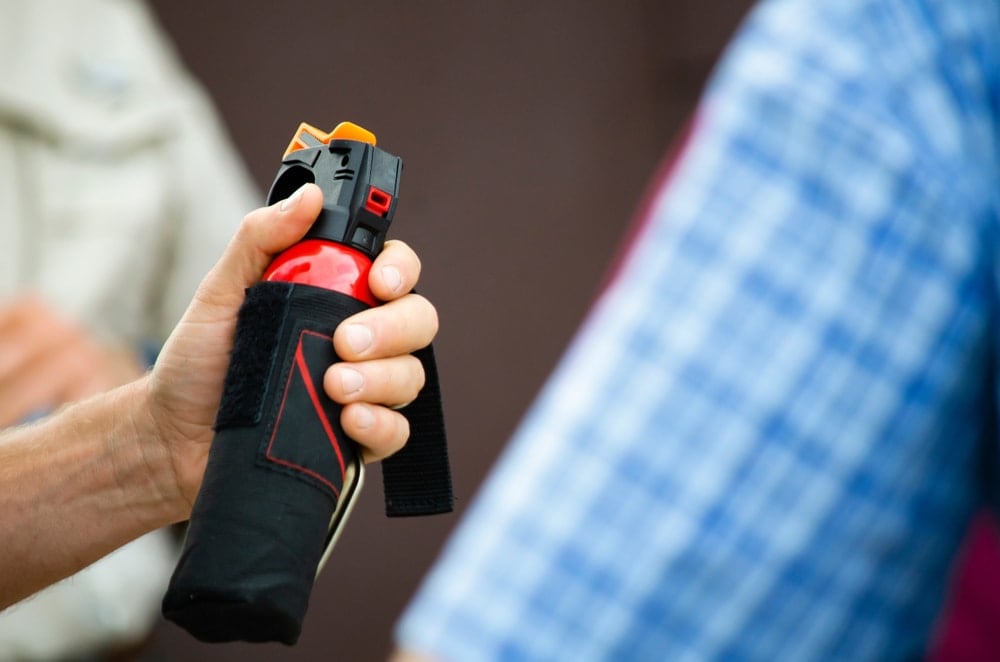
If a bear enters your campsite, you want to scare him away, even if he doesn’t appear threatening to avoid bear attacks. First, if possible, lock yourself in your car and roll up the windows. Once inside, honk the horn, engage the panic alarm, flash the lights, and otherwise try to make as much noise as possible.
Also, keep bear spray at the ready. Bear spray is specifically formulated to repel bears. Researchers found it successfully repels bears 92% of the time. For comparison, firearms have a success rate of about 67% when used to stop aggressive bears.
Use bear spray only if you encounter a bear outside. Don’t use the spray if you’re inside the car, as your vehicle can trap the irritant inside with you. Also, take some time to familiarize yourself with how the spray works. Typically, it involves removing a safety guard and pulling a trigger, but even this basic operation can be challenging if you’re facing down a bear — so practice, practice, practice!
Frequently Asked Questions
Here are quick answers to common questions about how to stay safe when car camping in bear country:
Can a Bear Open a Car Door?
Absolutely! If a bear attempts to enter a car, they’ll paw and poke at it relentlessly. It’s not only possible for a bear’s paw to slip under the door handle, it happens more often than many people realize.
Locking your door adds a layer of protection against a bear opening it. Generally, bears look for easy eating opportunities. If they find it difficult to gain access to your vehicle, they’re more likely to give up and move on.
Can a Bear Smell Food in a Car?
Yes. A bear’s sense of smell is up to seven times stronger than a bloodhound. However, you can minimize food scents from inside your car by storing food in tight, sealed containers. Also, keep the windows of your vehicle rolled up when you’re not inside.
If you’re inside your vehicle, you can roll down the windows partially. However, never eat inside your car, as residual smells, no matter how slight, can attract bears from great distances.
What Types of Bears Might I Encounter When Car Camping?
There are three types of bears native to North America – black bears, grizzly bears, and polar bears. Of those three, black bears are the most common by far. They’re found in 40 states and can live close to human populations.
If you’re going to encounter a bear in the wild, it’ll almost certainly be a black bear. While grizzly bears are larger and more lethal, they’re only found in a few locations, such as Alaska and Yellowstone National Park.
What Should I Do if I’m Approached by a Black Bear?
Black bears aren’t particularly aggressive and tend to stay away from humans. It’s unusual for a black bear to approach a person, especially during daylight hours.
If approached by a black bear, back away slowly while continuing to face the bear. Speak to it in a low, firm voice. (Obviously, it doesn’t matter what you say specifically, but “go away” and “shoo” are popular choices.)
If the bear continues to follow you, make as much noise as possible. Wave your arms to appear bigger. Throw objects, such as rocks, directly at the bear. If you’re carrying bear spray, release the safety and fire if the bear charges you.







